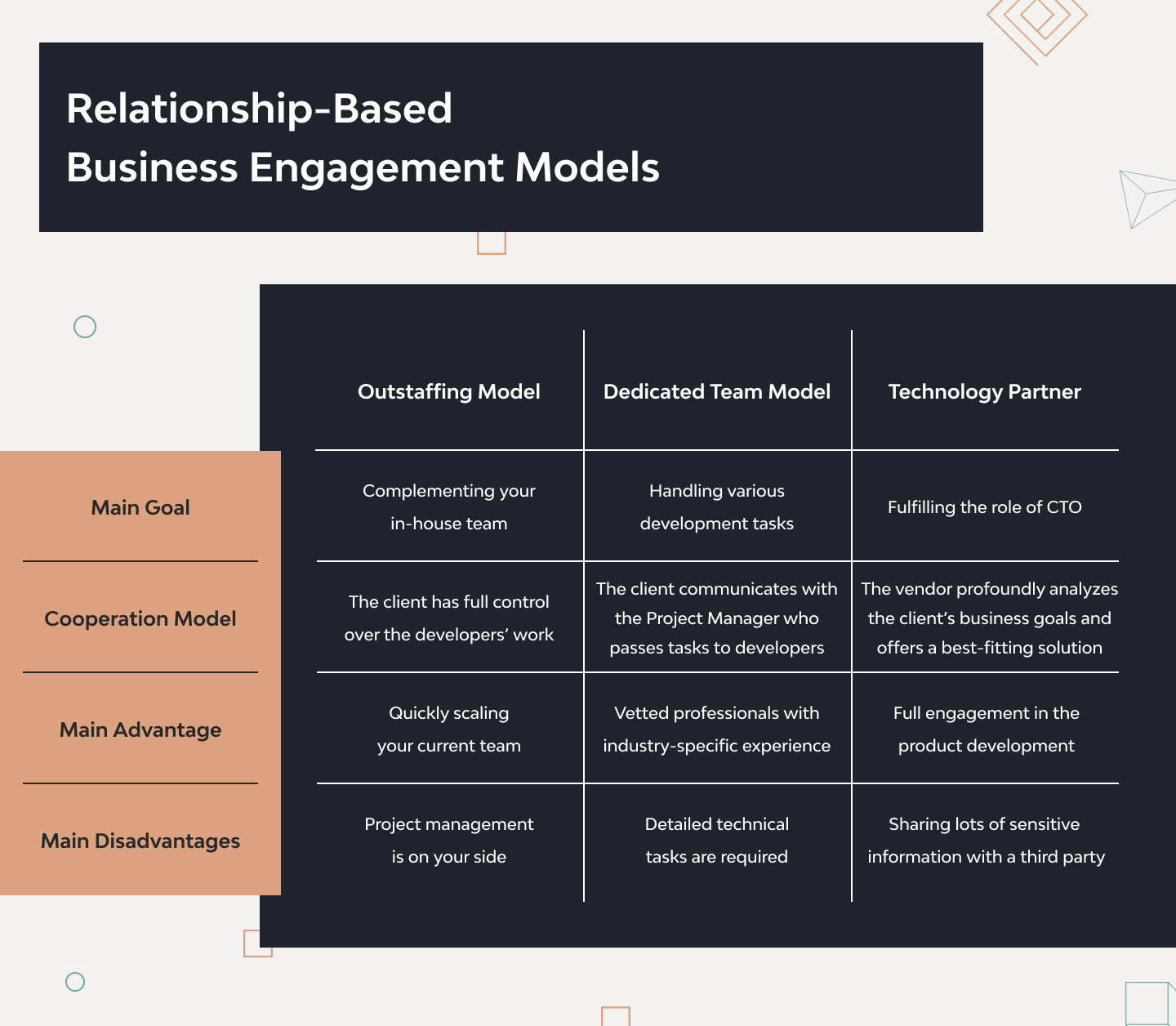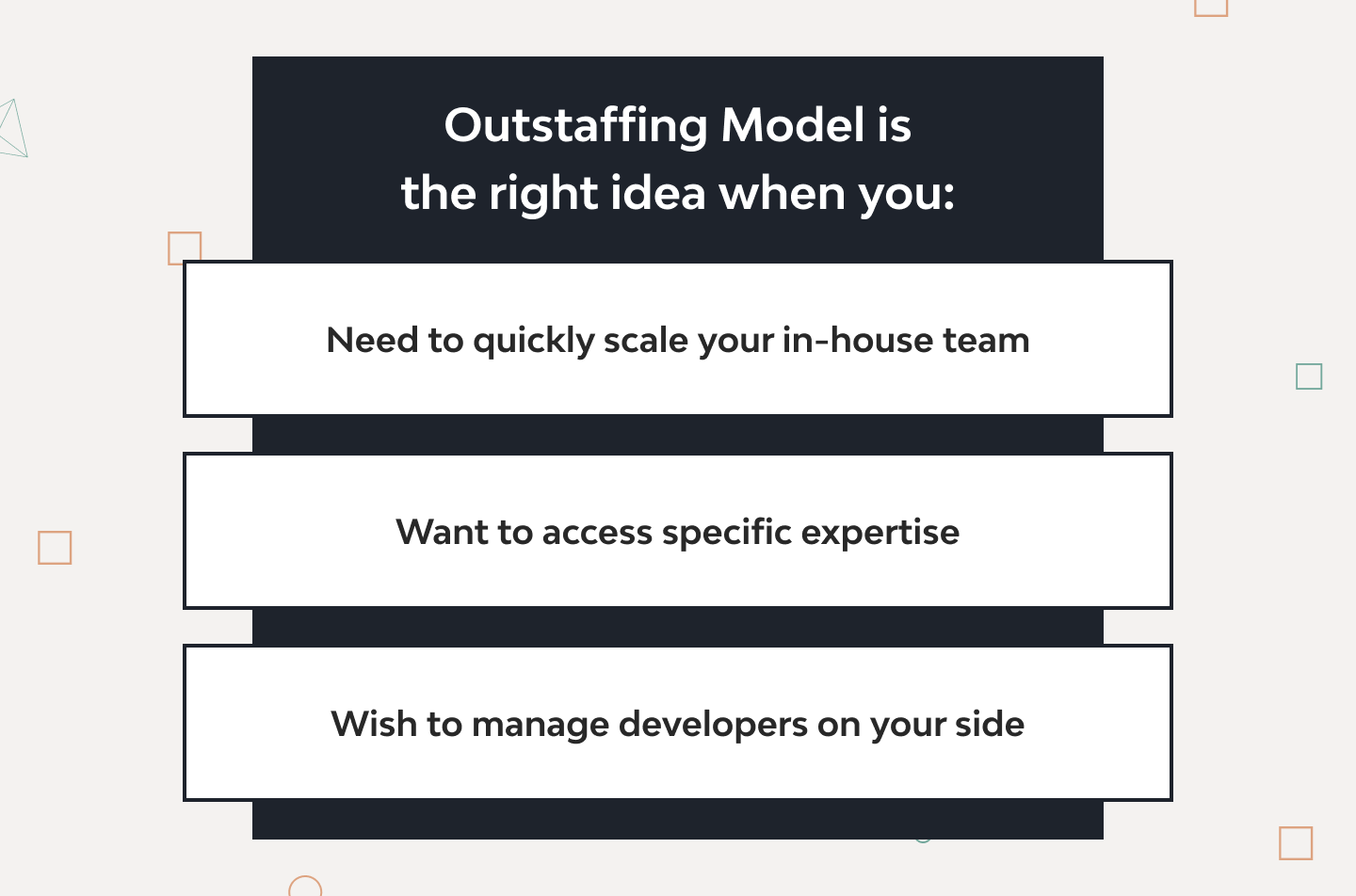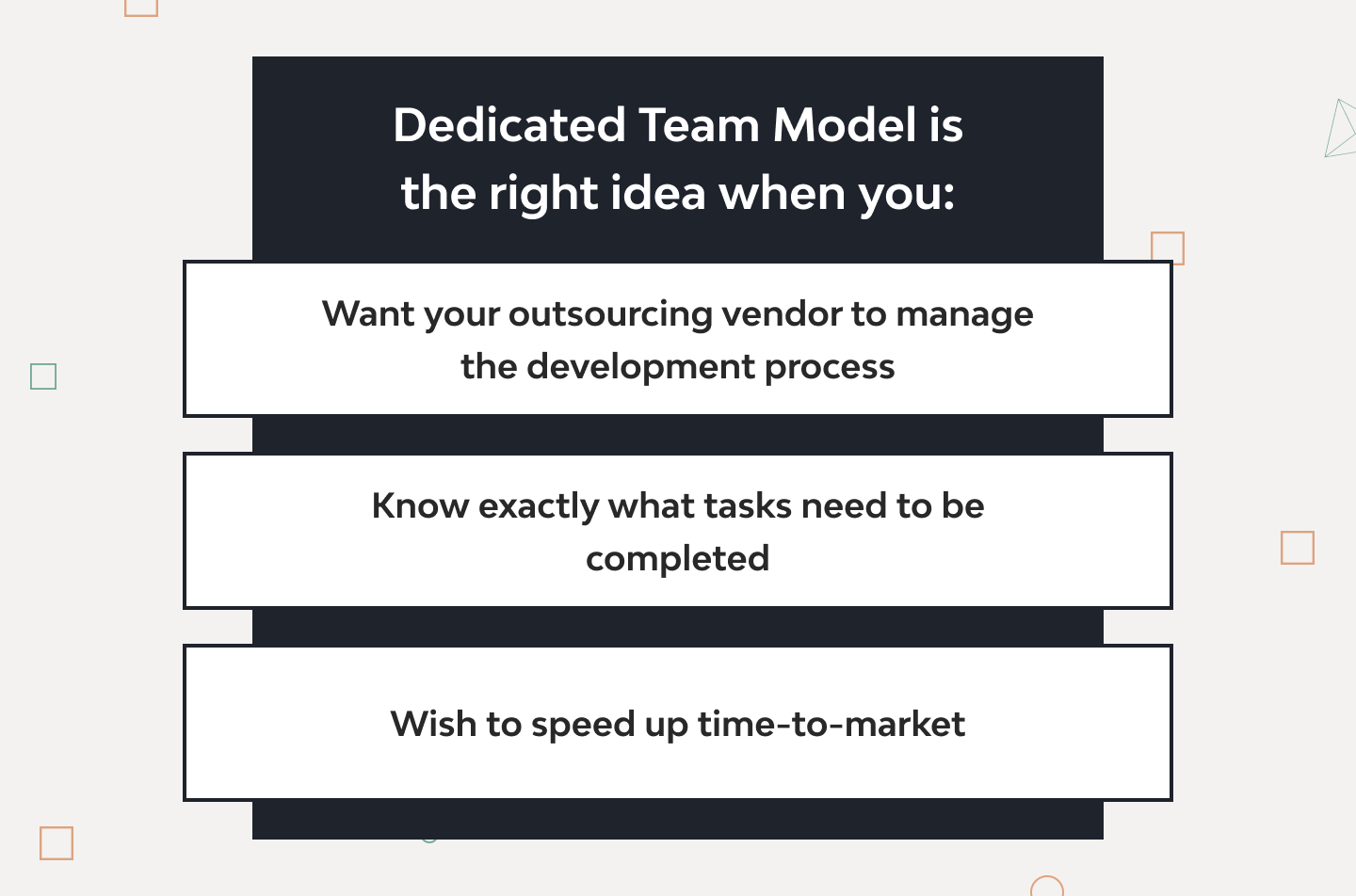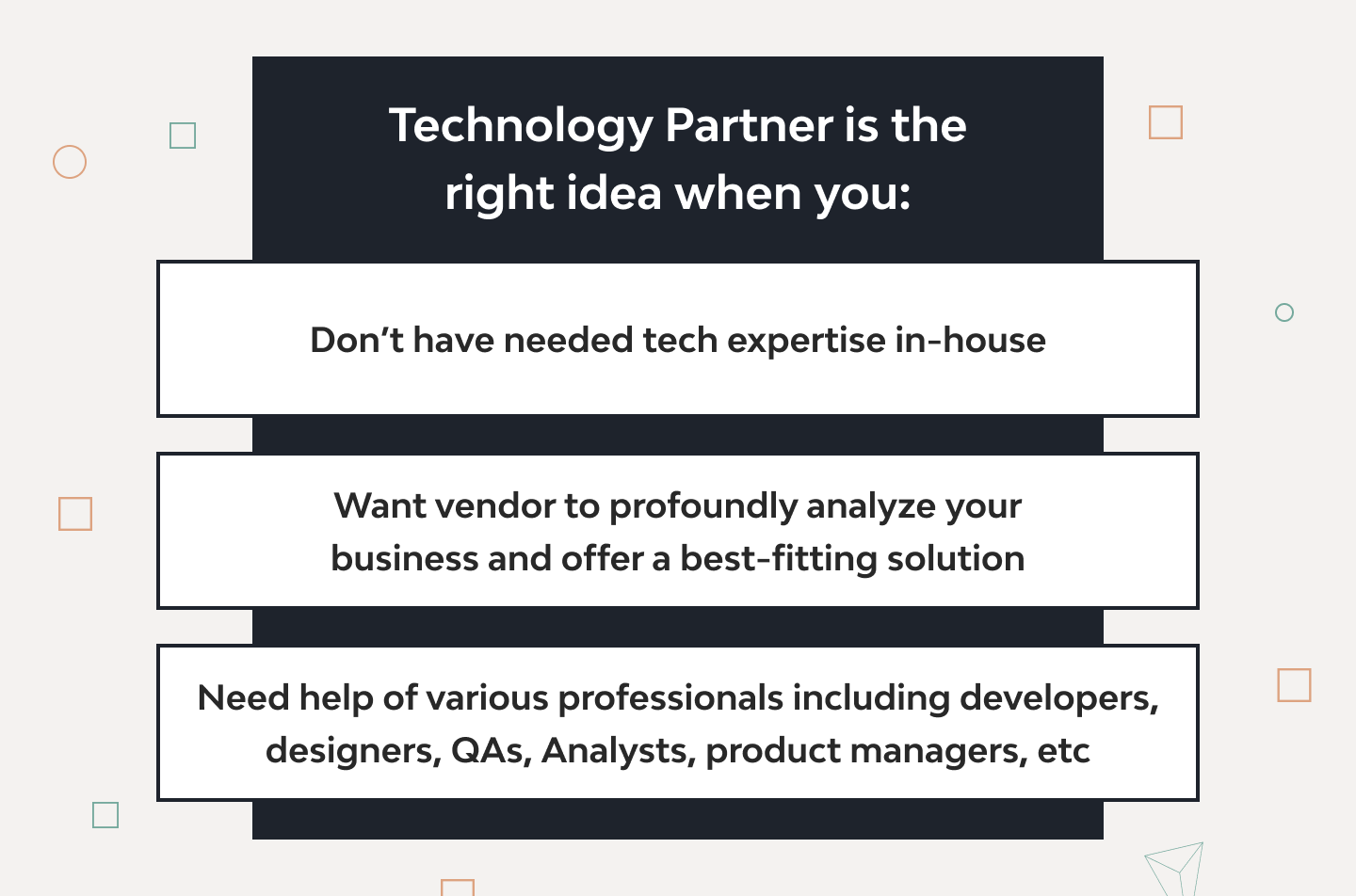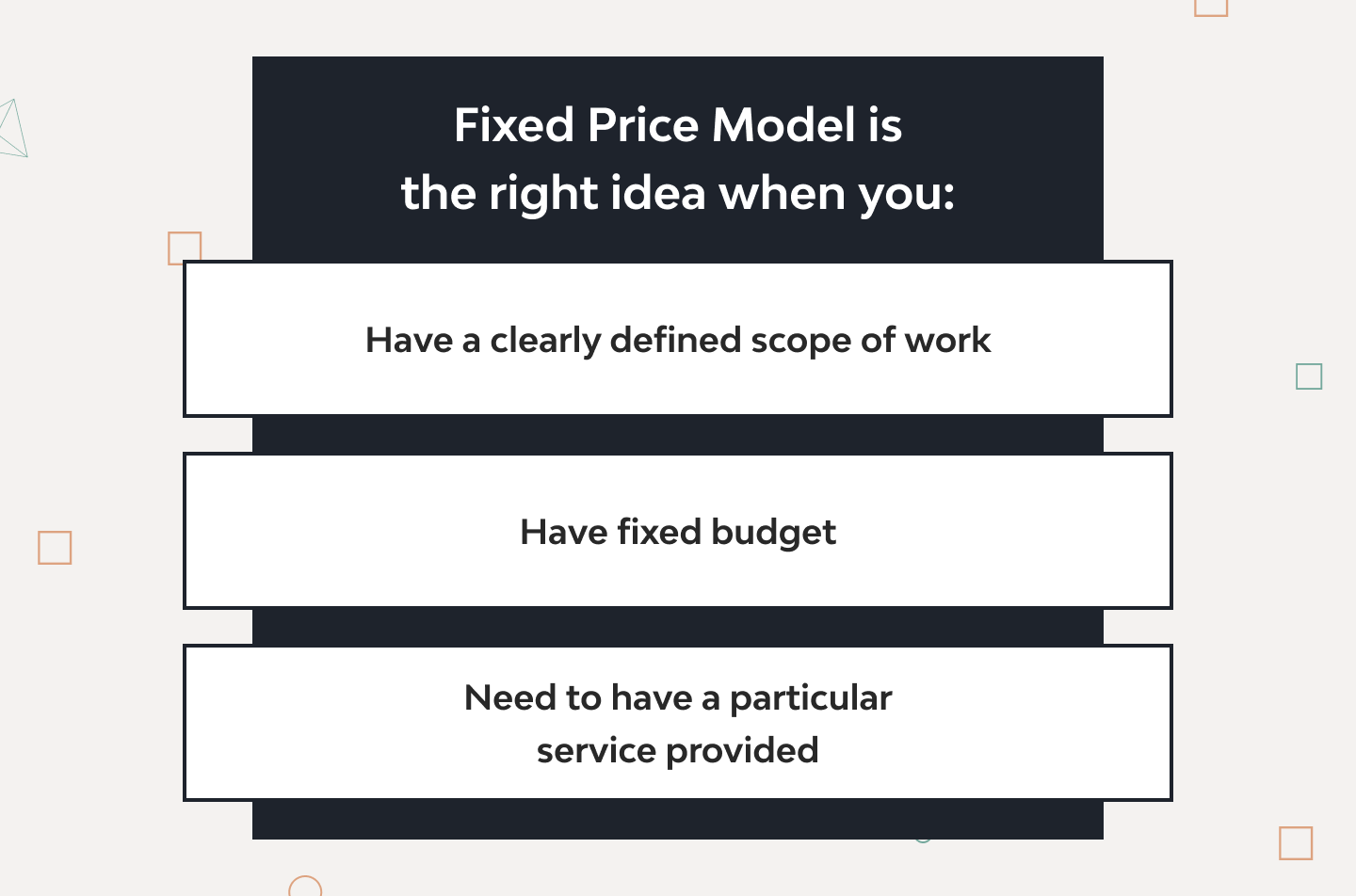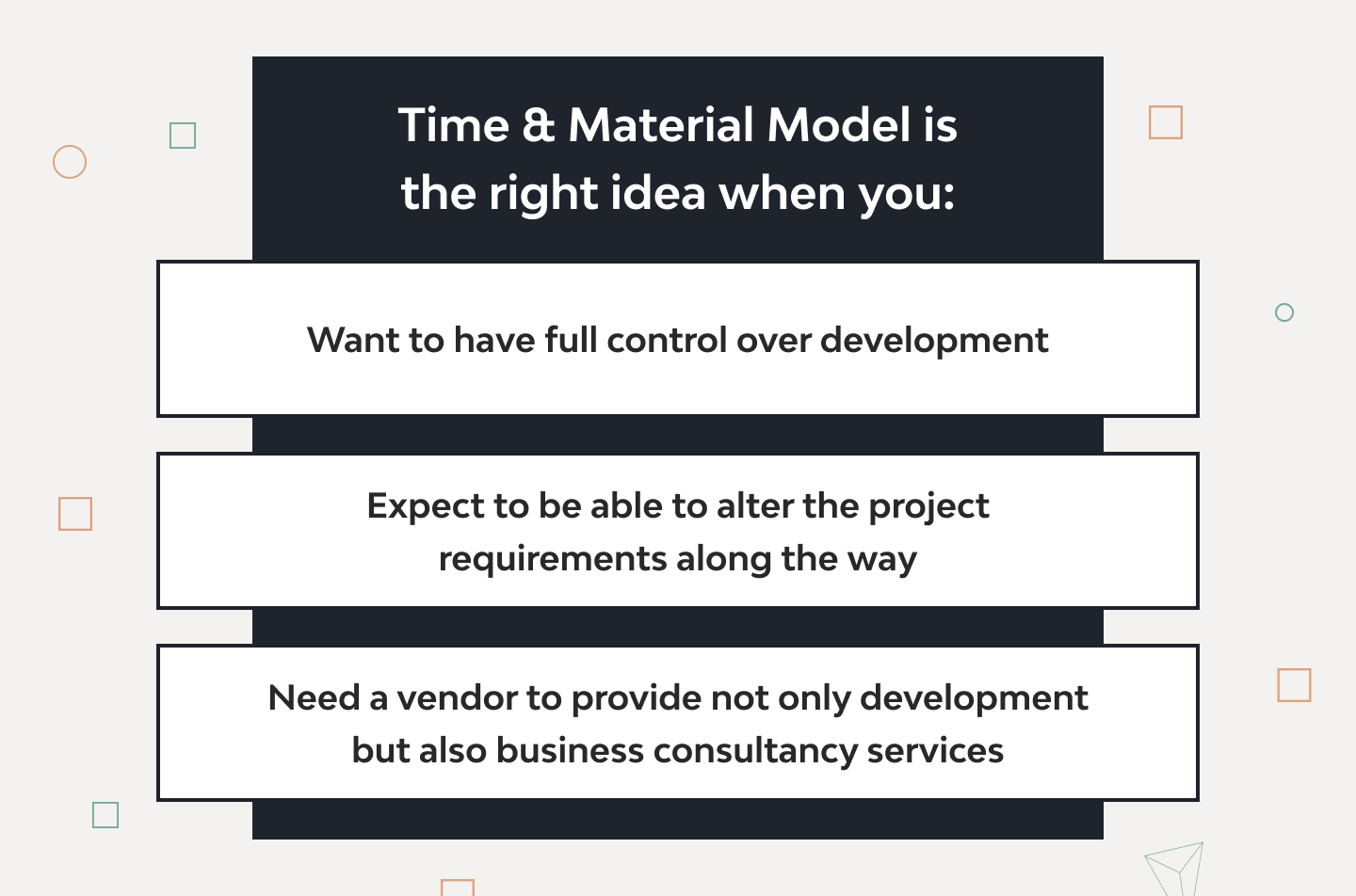Engagement Models: Meaning, Types, And Process

After the whole world switched to the remote work mode due to the pandemic, the development of software products became a necessity for many businesses. Luckily, now companies don’t always need to spend money and resources on hiring in-house development teams, but can turn to the outsourcing agencies. The success of the development process greatly depends on the right choice of the IT engagement model that should be based on your internal technical expertise and business goals.
In this article, we are going to focus on engagement models in IT industry and how to choose them. Building software is like building a house, and outsourced developers are your contractors. How you will engage with those builders depends fully on the house project. Do you just need people who can turn a well-planned architecture plan into life? Do you need those who can develop your idea a bit more? Or do you need those who will just create a whole plan of the house?
There is no best business engagement model. However, there is a model that is the most suitable for your specific case. Let’s discover all the engagement models in IT business to help you decide what corresponds to your needs the best.
What is an Engagement Model?
An engagement model in IT business is a set of guidelines that defines the relationship between the client and the development team. It includes the responsibilities, obligation, commitment, rules, tasks, and duration of the engagement. All of these are written down in a legally binding contract signed by both parties.
Choosing the right IT business partner engagement model means a lot to the process of development and the final outcome since otherwise, the client can get:
Project Management Problems
Do you have no idea how to manage tech teams, set tasks and realistic deadlines for them? Then hiring freelancers who need a strictly defined scope of work will not be the best idea. You may find yourself struggling with communication and management and hate the project in the development stage.
Budget Planning Problems
The development vendor analyzes all client’s requirements and estimates the approximate cost needed for the project. Proper budget planning is especially important for companies with tight budgets. Otherwise, you may end up not having enough money to continue the work and stretch the project out or go bankrupt before launching the product.
Dissatisfaction with the Final Product
If you had communication problems or ended up having too little control, you may end up with a product you do not like or do not need. You will then have to either invest more money to fix the issues or lose everything you have spent before.
The right engagement model, on the other hand, can help the client to get the most out of money invested, enjoy the smoothest and stress-free collaboration and great software in the end.
Read more: Scrum communication plan and how to create it correctly?
Types of Engagement Models
Choosing the right model does seem like a very responsible task. So how do you choose one? The first step towards the perfect fit is the discovery of all the types of IT engagement models, their advantages, disadvantages, and when they fit the best.
The engagement models differ depending on the types of relationships between the client and vendor, and depending on the type of contract between the parties. Read on to discover the definitive list of the IT engagement model examples that are widely used in software development.
Relationship-Based Business Engagement Models
Engagement models differ based on the level of the vendor’s involvement in the project, and the client’s expectations from a vendor. Read on to learn about 3 main relationship-based engagement models in the IT industry and their particularities.
Outstaffing Model
An outstaffing model is used when the in-house team needs an extension. Companies turn to outsourcing agencies and the latter recruits and onboards new employees. In fact, these new employees become a part of your in-house team but they are still legally employed by an outsourcing agency.
An outsourcing agency provides developers with workspaces, equipment, benefits, HR managers, etc. Consequently, you can avoid all the costs connected to these sides of development. At the same time, the client is the one who manages the employees and has full control over their activity.
Oftentimes outstaffing means working with extension teams remotely since they come from other countries. In that case, it may be a good idea to find someone not that far from your time zone to simplify the collaboration.
Advantages of Outstaffing Model
- Ability to quickly scale a team up or down: vendor manages all recruitment and HR processes, so you can quickly adjust the size of the team depending on your business needs.
- Vast background industry-specific knowledge: vendor selects the professionals with the needed expertise and industry-relevant experience, and you can benefit from having alternative perspectives.
- Full control over developers’ work: your in-house Project Managers manage the developers, so you can control their performance and adjust it if needed.
Disadvantages of Outstaffing Model
- Language and cultural barriers: outstaffing model often implies extending your current team with the developers from foreign countries. In order to avoid various misunderstandings, make sure to ask your vendor to test the candidate’s language knowledge as well as to conduct psychological tests to ensure the right cultural fit.
- Time zones: while working with developers from different time zones, it’s important to correctly establish their collaboration with your in-house team. For example, a remote team can work on the tasks while your in-house team rests, and your in-house team can check the performance of the remote developers while those rest. A 2-3-hours overlap between the working hours of the remote and the in-house teams would be enough for them to discuss the tasks and plan the future work.
- More responsibility on your side: as all the project management happens on your side, you need to make sure to provide developers with detailed technical tasks and control the quality of their work.
The outstaffing model works best for those who need to scale their teams immediately and effortlessly. It happens mostly after you have received additional funding or the product was launched to the market and has to be scaled. Outstaffing is also used when the client needs expertise in a specific field immediately and can not find the right tech talent at home.
Dedicated Team Model
A dedicated team model means that the client transfers a set of tasks to a third party, oftentimes outside of the country. The communication process follows a client-Project Manager-developers model. Businesses choose this model to cut costs of development and spare time spent on recruiting.
Outsourcing agencies have numerous developers in-house who have proven their skills and have already successfully completed other projects. According to the client’s requirements, the vendor chooses a team of developers among those who are currently not engaged in other projects.
Advantages of Dedicated Team Model
- Lower development costs: you can cut costs by hiring offshore teams since they usually provide the same great quality but have smaller pay rates. You also do not have to spend money on an office, benefits, computers, and other equipment.
- Vendor’s project managers are responsible for communication: since outsourcing agencies usually provide a project manager, you will not need to watch over the tech team and, consequently, stay up at an unreasonable time to check the working process.
- Industry-specific expertise: you can choose a vendor who specializes in creating technological solutions for your specific niche. This way you would be able to benefit not only from their technical expertise but also from their extensive business knowledge.
Disadvantages of Dedicated Team Model
- Lack of control: another side of the fact that the vendor is responsible for all the project management is the lack of control over the development process. You need to provide very detailed task descriptions in order to receive the service you need.
- Language and cultural barriers: it is difficult to manage people across borders or even in other cities. There are language and cultural barriers to consider as well. The difference in time zones is a problem for some people and does not mean a thing to others.
- Need to pass sensitive business information to a third party: in order for the vendor to better analyze your business and its goals, you often need to share sensitive information. That is why it’s important to choose a vendor with many positive reviews and have legal professionals prepare NDAs.
A dedicated team engagement model is a good solution for those who already have a product idea, research on it, and product requirements. Outsourced developers usually analyze the requirements, form the tasks set, and fulfill it.
Technical Partner
Technology partners go beyond development: they also help you to develop the idea, understand why you, the market, and users need it, research the market, provide advice on features and design, etc. Among all the project engagement models, this one implies the deepest immersion into the business processes and needs.
In this IT engagement model, vendors perform the role of the CTO, meaning that the IT business partner profoundly analyzes your business and its goals, and offers the solutions accordingly. By the way, you might be interested in CTO as a service.
Advantages of Working with a Technology Partner
- Profound analysis of your business needs: the IT service provider gives the client not only expertise in coding but in the business side of software development as well. Technology partner does not fulfill tasks no matter how irrelevant or unoptimized they are but suggests better features, well-optimized processes, and cost-effective solutions. Tech partners care about the final product way more than development teams who are more project- or task-oriented.
- A broader scope of expertise: technology partners usually have various professionals on board who would be able to solve any challenges for you including design, software testing, business analytics, and others.
- Building of close and trustful relationships: while choosing this cooperation model the client doesn’t need to have any tech team in-house, as all the technical tasks can be successfully managed by the vendor in accordance with the client’s business goals.
Disadvantages of Working with a Technology Partner
- Need to share lots of information with a third party: in order for the vendor to correctly analyze the current condition of your business and find the best ways to reach your business goals, the client needs to disclose a massive amount of sensitive business information.
- The lack of control: technology partners perform all the work independently, so if you don’t have in-house IT experts it may be hard to control the vendor’s work.
- Need to ensure the right cultural fit: the technology partner directly influences the development of the client’s project and business overall, so it’s important to choose the vendor who understands the values and the mission of your company.
This engagement model for software development is the best solution for those who just have an idea and do not know what to do next. A tech partner will lead you through the next steps seamlessly, help to turn an idea into a full functioning project and offer expertise in business and tech fields.
Type-of-Contract Business Engagement Models
Most outsourcing development companies offer fixed price and time & material pricing models. Read on to learn how they differ and which model is suitable for each situation.
Fixed Price Model
Fixed price model means thorough planning in advance: time, task scope, materials to be used. Based on this estimated project scope, the budget is being set for the entire development process. Development teams cannot charge extra without your approval.
This type of contract is often chosen by small projects with a limited budget and scope of work. Regardless of the fact that a fixed price model allows you to estimate the final development cost beforehand, it often changes along the way when unexpected challenges appear.
Advantages of Fixed-Price Model
- Low financial risk: you know the cost of development in advance and the vendor can not overcharge you.
- Clear plan: if you have a well-defined scope of work, developers are less likely to forget something and the set deadlines will keep them from procrastinating.
- No need for constant management: you hand over the project scope in the beginning and can focus on other business goals while tasks are being completed.
Disadvantages of Fixed-Price Model
- No flexibility: it often happens that the project turns out more complex or you need to add a new feature ASAP. In a fixed price model, changing something is costly and time-consuming.
- Long planning: in order to estimate the cost accurately, you have to consider all risks, changes, human factors in advance and clearly define the project.
- Communication issues: it is impossible to define tasks so well that everyone understands them. You may be surprised by the results if you do not check in with your vendor on a regular basis.
Time & Material Model
The time and material model means that the client pays for actual time and resources spent by developers. You pay for the actual tasks completed rather than guessing them in advance. It is a better option for software development projects that tend to go through numerous changes in the process.
This model allows the client to adjust the development process according to the ever-changing business needs. If you happen to need more or fewer developers than expected you can easily scale the team up or down.
Advantages of Time & Material Model
- Flexibility: you can make changes as you go to improve the initial idea.
- Fast project start: a client does not have to go through thorough planning to estimate all risks, changes, deadlines, and tasks.
- More control over the development process: the client can always intervene in the project to learn more about what developers are doing at the moment or suggest changes.
Disadvantages of Time & Material Model
- Low budget planning: you can rarely estimate the end price of the project because of the changes.
- Unclear deadlines: since the scope of the project is not well-defined, you can not measure how much time the development process will take.
- Constant communication with the vendor: while choosing this model, your constant involvement in the development process would be needed as you’d need to approve the proposed changes.
Our Approach to the Engagement Process
At Django Stars, we thoroughly analyze the client’s needs in order to offer the most suitable engagement model. We take into account budget, the level of idea development, preferred level of client’s engagement and management, whether there is an established in-house team, etc.
Before we start our collaboration, we sign a non-disclosure agreement so that clients can feel comfortable while sharing their ideas and plans. There is no need to be afraid of sensitive business information leaks.
The next steps depend on how far the customer’s idea has come. If you have a set of requirements, we choose the best-fitting talents from our base of vetted professionals. If it is a raw idea that you are still not sure about, we begin with the discovery phase. During the discovery phase, we will research the market, build a more clear product vision with you, identify the main risks, and create a roadmap of the development.
After the discovery phase, you may decide whether you want to continue the collaboration with us. Discovery works as a test drive so that you can learn whether you are comfortable working with us or discover collaboration needs that will be negotiated later.
How to Select the Right Engagement Model?
As we have mentioned before, there is no fit-them-all solution in the engagement. Therefore, you have to learn more about your needs before choosing between engagement models in software development. Answering the following questions would help you to better understand your needs and expectations, and thus choose the most suitable engagement model:
Size of Your Current Team
Do you already have a tech team and are looking for an extension? In this case, you may want to choose outstaffing.
Are you starting from scratch? Tech partners or outsourcing agencies will find a full team for you in no time.
Budget
Do you have a tight budget? Do you want to have a fixed budget with as few extensions as possible? Do you see budget as your priority rather than comfort? Then outsourcing with its fixed prices and low pay rates is the right option for you.
Idea Development Stage
Do you have a mere idea without any requirements? It is time to find a tech partner who will guide your next steps seamlessly. You may also need software consultancy as well.
Do you have a roadmap and a set of tasks already? Both outstaffing and outsourcing will gladly take over the projects.
Tech Knowledge
Are you able to manage tech teams and set clear tasks and requirements? Do you know how to optimize the process and choose only the needed tasks or features set? Then outstaffing might be just the right option for your project. Otherwise, choose options with a project manager involved.
Scope of Work
Is your project small, medium, or big? Are you creating an MVP or a full-functioning software? The scope of work is an important factor to consider while choosing the engagement model.
Your Engagement Level
How much do you want to be involved in the project: manage teams yourself, manage teams with a PM, or just receive weekly updates from a PM?
Your Priorities
What is the most important thing for you in the development process: timely delivery, comfortable communication, budget-friendliness, and help with the development of your idea?
If you have answered these questions and therefore defined your needs, you are more likely to find the best option for your business. If it seems like there is no perfect option for you, you can always contact a vendor and negotiate on the custom engagement model.
Choosing a well-fitting engagement model can influence the success of your product significantly. The aim is not to choose the best option out there (it simply does not exist) but the best option for your specific software idea.
While choosing between outsourcing, outstaffing, and cooperation with a tech partner, you have to learn about your needs first: define your budget, idea development stage, tech knowledge, and priorities.
If you want a custom engagement model, a combination of them all that fits your needs perfectly, do not hesitate to reach out to Django Stars. We will define the most suitable collaboration framework and start the work right away.
- Which engagement model is the most cost-effective?
- Most outsourcing development companies offer fixed price and time & material pricing models. Do you have a tight budget? Do you want to have a fixed budget with as few extensions as possible? Do you see budget as your priority rather than comfort? Then outsourcing, with its fixed prices and low pay rates, is the right option for you.
- Which model of engagement will help me develop software faster?
- The fixed price model means setting the budget and deadline for the entire development process based on the estimated project scope. Although the fixed price model requires thorough planning in advance, it helps to answer how much time the development process will take as opposed to the time & material model with its unclear deadlines.
- Which engagement model has less risk associated with its delivery?
- There is no fit-them-all solution in the engagement. At Django Stars, we thoroughly analyze the client’s needs in order to offer the most suitable engagement model. We take into account budget, the level of idea development, preferred level of client’s engagement and management, whether there is an established in-house team, etc. The Discovery phase works as a test drive so that you can learn whether you are comfortable working with us or discover collaboration needs that will be negotiated later.
- Which is better to choose a fixed price model or a time & material model?
- There is no best business engagement model, but there is a model that is the most suitable for your specific case. The advantages of the fixed-price model are low financial risk, clear planning, and no need for constant management. However, it has such disadvantages as long planning, communication issues, and lack of flexibility. The advantages of the time & material model include flexibility, fast project start, and more control over the development process. But it also has its disadvantages: unclear budget planning, unclear deadlines, and the need to maintain constant communication with the vendor.

